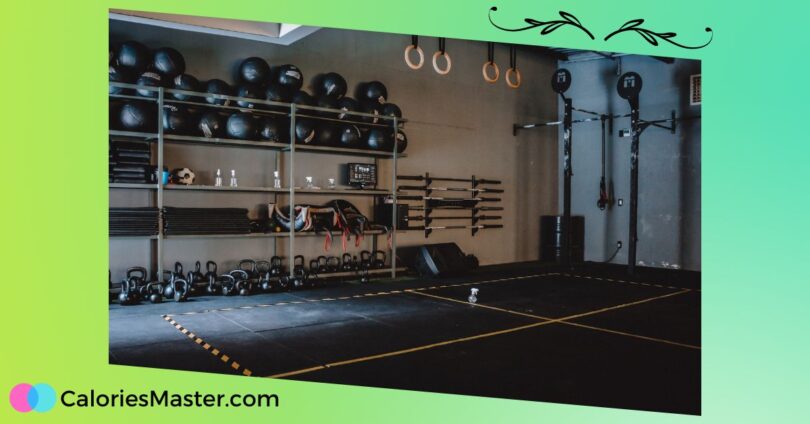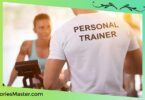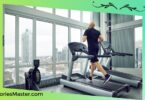If you’re looking for a high-intensity workout that will challenge you both mentally and physically, CrossFit Bootcamp WODs might be the perfect fit for you. These workouts are designed to push you to your limits and help you achieve your fitness goals.
They combine strength training, cardio, and functional movements to create a full-body workout that will leave you exhausted but accomplished.
One of the main benefits of CrossFit Bootcamp WODs is their versatility. The workout is different daily, so you’ll never get bored or stuck in a rut. You’ll constantly be challenged to try new exercises and push yourself harder than you thought possible.
Plus, the various movements will help you build strength and endurance in all areas of your body.
Whether you’re a seasoned athlete or just starting, CrossFit Bootcamp WODs can be tailored to your fitness level. The workouts are designed to be scalable, meaning you can adjust the weights and reps to suit your abilities.
This makes them accessible to anyone willing to put in the effort and dedication to achieve their fitness goals.
Fundamentals of CrossFit Bootcamp WODs
CrossFit Bootcamp WODs are designed to challenge your body and mind while improving your overall fitness. These workouts are typically high-intensity and incorporate various exercises that target different muscle groups. Here are some fundamentals of CrossFit Bootcamp WODs that you should keep in mind:
1. Warm-up
Before starting any CrossFit Bootcamp WOD, it is important to warm up your body properly. This can help prevent injury and prepare your muscles for the workout ahead. A good warm-up should include light cardio, jogging or jumping jacks, and dynamic stretching exercises. Examples of dynamic stretches include leg swings, arm circles, and lunges.
2. Skill Development
CrossFit Bootcamp WODs often include exercises that require a certain level of skill. Working on these skills regularly is essential to improve your technique and prevent injury. For example, if the WOD includes Olympic lifts, you should practice them with a lightweight before attempting them in the WOD.
3. Workout of the Day (WOD)
The WOD is the main part of the CrossFit Bootcamp workout. It typically consists of several exercises performed in a specific order and for a set amount of time or number of repetitions. The exercises in the WOD can be modified to suit your fitness level, but they should still challenge you. It is important to pace yourself during the WOD and take breaks if needed.
4. Cool-down and Mobility
After completing the WOD, cooling down and stretching your muscles is important. This can help prevent muscle soreness and improve your flexibility. Cool-down should include light cardio, such as walking or cycling, and static stretching exercises.
Examples of static stretches include hamstring, quad, and shoulder stretches.
CrossFit Bootcamp WODs are a great way to improve your fitness and challenge yourself. By following these fundamentals, you can ensure that you get the most out of your workouts while staying safe and injury-free.
Structuring a CrossFit Bootcamp Session
When it comes to structuring a CrossFit Bootcamp session, you should consider a few key components. These include the warm-up routine, skill development, high-intensity workouts, and cool-down techniques.
By incorporating these elements into your session, you can create a well-rounded and effective workout that will challenge your participants and help them achieve their fitness goals.
Warm-Up Routines
Before diving into the main workout, it’s important to warm up your participants’ muscles and get their blood flowing. A dynamic warm-up that includes jumping jacks, high knees, and arm circles can help prepare the body for a more intense workout.
Additionally, incorporating mobility exercises like lunges, squats, and shoulder rotations can help improve the range of motion and prevent injury.
Skill Development
The skill development portion of your session should focus on teaching and practicing specific movements and techniques. This can include exercises like deadlifts, cleans, overhead presses, and gymnastics movements like pull-ups and handstands.
By breaking down these movements and providing individualized feedback, you can help your participants improve their form and build strength.
High-Intensity Workouts
The high-intensity portion of your session should be challenging and varied, incorporating cardio and strength exercises. This can include WODs (workouts of the day) like “Fran,” “Helen,” and “Cindy,” as well as other exercises like box jumps, kettlebell swings, and rowing.
You can help keep your participants engaged and motivated by constantly varying the exercises and intensity levels.
Cool-Down Techniques
Finally, cooling down and stretching after the workout is important to prevent injury and improve recovery. Static stretches like hamstring, hip flexor, and shoulder stretches can help improve flexibility and reduce muscle soreness. Foam rolling and other self-massage techniques can help release tension and promote recovery.
By structuring your CrossFit Bootcamp session to include a warm-up routine, skill development, high-intensity workouts, and cool-down techniques, you can create a challenging and effective workout to help your participants achieve their fitness goals.
Essential Equipment for CrossFit Bootcamps
You need the right equipment to get the most out of your CrossFit bootcamp workouts. Here are some essential pieces of equipment that you will need to help you get started.
Barbells and Bumper Plates
Barbells and bumper plates are essential for CrossFit boot camps. They are used for weightlifting exercises such as deadlifts, squats, and presses. Bumper plates are designed to be dropped from overhead without damaging the floor or the plates themselves. This makes them ideal for CrossFit workouts where speed and intensity are key.
Kettlebells and Dumbbells
Kettlebells and dumbbells are great for building strength and endurance. They can be used for various exercises such as swings, snatches, and presses. Kettlebells are particularly useful for working on grip strength, which is important for many CrossFit exercises.
Gymnastic Rings and Pull-Up Bars
Gymnastic rings and pull-up bars are essential for building upper body strength. They can be used for exercises such as pull-ups, muscle-ups, and dips. Gymnastic rings are also great for working on your core strength and stability.
Jump Ropes and Medicine Balls
Jump ropes and medicine balls build endurance and improve cardio fitness. Jump ropes are an essential piece of equipment for double-unders, a common exercise in CrossFit workouts. Medicine balls can be used for exercises such as wall balls, which are great for building leg and core strength.
Overall, having the right equipment is essential for getting the most out of your CrossFit bootcamp workouts. Ensure you have everything you need before you start your workout so you can focus on pushing yourself to your limits.
Nutrition and Recovery for CrossFit Athletes
As a CrossFit athlete, fueling your body with the right nutrients and allowing for proper recovery is important. Here are some guidelines to help you optimize your nutrition and recovery for CrossFit boot camp WODs.
Dietary Guidelines
You must consume enough calories to meet your training demands to perform at your best. According to WODprep, energy balance determines whether weight will be gained or lost. If you are training hard, not gaining muscle, and not gaining weight, calorie balance is your problem.
You should consume a diet high in protein, carbohydrates, and healthy fats. Protein is essential for muscle recovery and growth, while carbohydrates provide energy for your workouts. Healthy fats are important for overall health and can also help with satiety.
Here are some foods that are great for CrossFit athletes:
| Protein | Carbohydrates | Healthy Fats |
|---|---|---|
| Chicken | Sweet potatoes | Avocado |
| Fish | Brown rice | Nuts and seeds |
| Lean beef | Quinoa | Olive oil |
| Greek yogurt | Oatmeal | Coconut oil |
Hydration Strategies
Proper hydration is essential for optimal performance and recovery. According to BOXROX, you should aim to drink at least half your body weight in ounces of water each day. For example, if you weigh 150 pounds, you should aim to drink 75 ounces of water per day.
During your CrossFit bootcamp WODs, it is vital to stay hydrated by drinking water before, during, and after your workout. You can also add electrolytes to your water to help replenish the minerals lost through sweat.
Rest and Recovery Periods
Rest and recovery periods are just as important as your workouts. According to Everything Crossfit, it is recommended that you take at least one rest day per week to allow your body to recover.
In addition to rest days, you should also incorporate active recovery into your routine. This can include activities such as yoga, stretching, or light cardio. Getting enough sleep is also important for recovery; aim for 7-8 hours per night.
By following these guidelines for nutrition and recovery, you can optimize your performance and recovery for CrossFit boot camp WODs.
Scaling and Modification of WODs
CrossFit Bootcamp WODs are designed to challenge your physical and mental limits. However, not everyone can perform the prescribed movements at the same intensity. Scaling and modifying WODs are essential to ensure everyone can participate in the workout and avoid injury.
Here are some ways to adjust the WODs:
Adjusting for Skill Levels
If you are new to CrossFit, you may find some movements challenging. Scaling the WODs can help you build your strength, endurance, and technique while reducing the risk of injury. Here are some ways to adjust the WODs for your skill level:
- Reduce the weight: If the prescribed weight is too heavy, reduce the weight to a manageable level. You can adjust the weight using dumbbells, kettlebells, or other equipment.
- Modify the movements: If you cannot perform the prescribed movements, modify them to a simpler version. For example, you can do box step-ups instead of box jumps or knee push-ups instead of full push-ups.
- Shorten the duration: If the WOD is too long, reduce the duration to a manageable level. You can do fewer rounds or reduce the time for each round.
Alternative Exercises for Injuries
If you have an injury or physical limitation, you may be unable to perform some movements. However, there are alternative exercises that you can do to work the same muscle groups. Here are some examples:
- You can do front or lateral raises with lighter weights instead of overhead presses for shoulder injuries.
- For knee injuries, you can do lunges or step-ups instead of squats.
- You can do glute bridges or hip thrusts instead of deadlifts for back injuries.
Remember, scaling and modification of WODs are not a sign of weakness. They are a way to ensure you can participate in the workout and safely achieve your fitness goals.
Safety Measures and Injury Prevention
Crossfit boot camp workouts can be intense and physically demanding, so taking safety measures and injury prevention seriously is essential. Here are some tips to help you stay safe during your workouts:
Proper Form and Technique
One of the most important things you can do to prevent injuries during CrossFit boot camp workouts is to use proper form and technique. This means taking the time to learn the correct way to perform each exercise and ensuring you use the correct form throughout the workout.
To ensure proper form and technique, consider working with certified CrossFit coaches who can provide instruction and advice on the proper form for each exercise. Start with lighter weights and gradually increase the load as your strength and form improve. Remember to listen to your body and take breaks if you feel fatigued or experience pain.
Emergency Procedures
Accidents can still happen during CrossFit boot camp workouts despite taking all the necessary precautions. It is important to have emergency procedures in place in case of an injury or other emergency.
Make sure you know the location of the first aid kit and fire extinguisher and have a plan for calling emergency services if needed. Consider wearing a medical alert bracelet if you have any pre-existing medical conditions that could impact your ability to exercise.
Taking safety measures and injury prevention seriously is crucial for a successful and enjoyable Crossfit boot camp experience. Using proper form and technique and having emergency procedures in place, you can minimize the risk of injury and focus on achieving your fitness goals.









